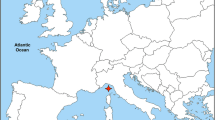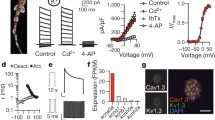Abstract
The electrosensory capabilities of wobbegong sharks are of particular interest, partly because very little is known about their behavioural ecology and specifically because of their unusual ambush predatory strategy and benthic lifestyle. While several biological functions of electroreception have been proposed, less consideration has been given to the functional significance of interspecific differences in the morphology and topographic distribution of the ampullary organs. The morphology of the ampullary organs was examined in four species of wobbegong shark, and the distribution of electroreceptive pores was mapped in two species. The ampullary systems of wobbegongs are similar in morphology to other marine elasmobranchs. The number of alveoli per ampullae is not significantly different between the four species; however, differences are seen between ampullary cell size in some species. Ampullary pore distribution patterns are relatively unique, with the majority of pores occurring on the dorsal region of the head. Wobbegongs feed primarily on demersal teleost fishes, and as the benthic and well-camouflaged wobbegong remains motionless, these fish could be easily detected by the dorsal pores when swimming within range.





Similar content being viewed by others
References
Allen RA (1965) Isolated cilia in inner retinal neurons and in retinal pigment epithelium. J Ultrastruct Res 12:730–747
Andres KH, von Düring M (1988) Comparative anatomy of vertebrate electroreceptors. Prog Brain Res 74:113–131
Atkinson CJL, Bottaro M (2006) Ampullary pore distribution of Galeus melastomus and Etmopterus spinax: possible relations with predatory lifestyle and habitat. J Mar Biol Assoc UK 86:447–448
Barber VC (1974) Cilia in sense organs. In: Sleigh MA (ed) Cilia and Flagella. Academic Press, London, pp 403–433
Barnes BG (1961) Ciliated secretory cells in the Pars Distalis of the mouse hypophysis. J Ultrastruct Res 5:453–461
Blonder BI, Alevizon WS (1988) Prey discrimination and electroreception in the stingray Dasyatis sabina. Copeia 1988:33–36
Bodznick D, Northcutt RG (1981) Electroreception in lampreys: evidence that the earliest vertebrates were electroreceptive. Science 212:465–467
Bratton BO, Ayers JL (1987) Observations on the electric discharge of two skate species (Chondrichthyes: Rajidae) and its relationship to behavior. Environ Biol Fish 20:241–254
Brown BR, Hutchison JC, Hughes ME, Kellogg DR, Murray RW (2002) Electrical characterization of gel collected from shark electrosensors. Phys Rev E Stat Nonlin Soft Matter Phys 65:061903
Brown BR, Hughes ME, Russo C (2005) Infrastructure in the electrosense: admittance data from shark hydrogels. J Comp Physiol A Neuroethol Sens Neural Behav Physiol 191:115–123
Camperi M, Tricas TC, Brown BR (2007) From morphology to neural information: the electric sense of the skate. PLoS Comput Biol 3:1083–1096
Carraro R, Gladstone W (2006) Habitat preference and site fidelity of the ornate wobbegong shark (Orectolobus ornatus) on rocky reefs of New South Wales. Pac Sci 60:207–223
Chidlow JA (2003) The biology of wobbegong sharks (Family: Orectolobidae) from south-western Australian waters. Masters Thesis, James Cook University
Chu YT, Wen MC (1979) Monograph of Fishes of China (No. 2): A Study of the Lateral-Line Canals System and that of Lorenzini Ampullae and Tubules of Elasmobranchiate Fishes of China. Science and Technology Press, Shanghai, China
Collin SP, Collin HB (2004) Primary cilia in vertebrate corneal endothelial cells. Cell Biol Int 28:125–130
Collin SP, Whitehead D (2004) The functional roles of passive electroreception in non-electric fishes. Anim Biol 54:1–25
Compagno LJV (1984) FAO species catalogue. Vol. 4, Sharks of the world. An annotated and illustrated catalogue of shark species known to date. Part 1. Hexanchiformes to Lamniformes, FAO Fisheries Synopsis
Compagno L, Dando M, Fowler S (2005) A Field Guide to the Sharks of the World. Harper Collins Publishers Ltd., London
Daniels CI (1967) The distribution, morphology, and innervation of the ampullae of Lorenzini in the hammerhead shark and other species. Masters Thesis, University of Hawaii
Doyle J (1963) The acid mucopolysaccharides in the glands of Lorenzini of elasmobranch fish. Biochem J 88:7
Fields RD, Bullock TH, Lange GD (1993) Ampullary sense organs, peripheral, central and behavioral electroreception in chimeras (Hydrolagus, Holocephali, Chondrichthyes). Brain Behav Evol 41:269–289
Fishelson L, Baranes A (1998) Distribution, morphology, and cytology of ampullae of Lorenzini in the Oman shark, Iago omanensis (Triakidae), from the Gulf of Aqaba, Red Sea. Anat Rec 251:417–430
Haine OS, Ridd PV, Rowe RJ (2001) Range of electrosensory detection of prey by Carcharhinus melanopterus and Himantura granulata. Mar Freshw Res 52:291–296
Huveneers C (2006) Redescription of two species of wobbegongs (Chondrichthyes: Orectolobidae) with elevation of Orectolobus halei Whitley 1940 to species level. Zootaxa 1284:29–51
Huveneers C, Harcourt RG, Otway NM (2006) Observation of localised movements and residence times of the wobbegong shark Orectolobus halei at Fish Rock, NSW, Australia. Cybrium Suppl 30:103–111
Huveneers C, Otway NM, Gibbs SE, Harcourt RG (2007a) Quantitative diet assessment of wobbegong sharks (genus Orectolobus) in New South Wales, Australia. ICES J Mar Sci 64:1–10
Huveneers C, Walker TI, Otway NM, Harcourt RG (2007b) Reproductive synchrony of three sympatric species of wobbegong shark (genus Orectolobus) in New SouthWales, Australia: reproductive parameter estimates necessary for population modelling. Mar Freshw Res 58:765–777
Jensen CE (1956) The demonstration of acid mucopolysaccharides in the glands of Lorenzini of the piked dogfish (Acanthias vulgaris). Proc Biochem Soc 64:3p
Jordan LK (2008) Comparative morphology of stingray lateral line canal and electrosensory systems. J Morphol 269:1325–1339
Jørgensen JM, Flock Å, Wersäll JZ (1972) The Lorenzinian ampullae of Polyodon spathula. Z Zellforsch Mikrosk Anat 130:362–377
Kajiura SM (2001) Head morphology and electrosensory pore distribution of carcharhinid and sphyrnid sharks. Environ Biol Fishes 61:125–133
Kajiura SM, Holland KN (2002) Electroreception in juvenile scalloped hammerhead and sandbar sharks. J Exp Biol 205:3609–3621
Kalmijn AJ (1966) Electro-perception in sharks and rays. Nature 212:1232–1233
Kalmijn AJ (1971) The electric sense of sharks and rays. J Exp Biol 55:371–383
Kalmijn AJ (1974) The detection of electric fields from inanimate and animate sources other than electric organs. In: Fessard A (ed) Handbook of Sensory Physiology Vol III/3. Springer-Verlag, Berlin, pp 147–200
Kalmijn AJ (1978) Electric and magnetic sensory world of sharks, skates, and rays. In: Hodgson ES, Mathewson RF (eds) Sensory Biology of Sharks. Skates, and Rays. Office of Naval Research, Arlington, VA, pp 507–528
Last PR, Chidlow JA (2008) Two new wobbegong sharks, Orectolobus floridus sp. nov. And O. parvimaculatus sp. nov. (Orectolobiformes: Orectolobidae), from southwestern Australia. Zootaxa 1673:49–67
Last PR, Stevens JD (2009) Sharks and Rays of Australia. CSIRO, Australia
Lorenzini S (1678) Osservazioni intorno alle Torpedini, vol 1, Florence
Lowe CG, Bray RN, Nelson DR (1994) Feeding and associated electrical behavior of the Pacific electric ray Torpedo californica in the field. Mar Biol 120:161–169
Moran DT, Varela FJ, Rowley JC (1977) Evidence for active role of cilia in sensory transduction. Proc Natl Acad Sci USA 74:793–797
Murray RW (1960) Electrical sensitivity of the ampullae of Lorenzini. Nature 187:957
Murray RW, Potts WTW (1961) The composition of the endolymph, perilymph and other body fluids in elasmobranchs. Comp Biochem Physiol 2:65–75
New JG (1997) The evolution of vertebrate electrosensory systems. Brain Behav Evol 50:244–252
Norris HW (1929) The distribution and innervation of the ampullae of Lorenzini of the dogfish, Squalus acanthias. Some comparisons with conditions in other plagiostomes and corrections of prevalent errors. J Comp Neurol 47:449–465
Northcutt RG (1986) Electroreception in nonteleost bony fishes. In: Bullock TH, Heiligenberg W (eds) Electroreception. John Wiley & Sons, New York, pp 257–285
Northcutt RG (1992) Distribution and innervation of lateral line organs in the axolotl. J Comp Neurol 325:95–123
Northcutt RG, Holmes PH, Albert JS (2000) Distribution and innervation of lateral line organs in the channel catfish. J Comp Neurol 421:570–592
Ohata M, Tanuma Y, Uchida K (1982) Electron microscopic observations on single cilia in the intrahepatic biliary ducts in some birds. Arch Histol Jpn 45:285–301
Parker GH, Heusen APV (1917) The response of the catfish Amiurus nebulosus to metallic and non-metallic rods. Am J Physiol 44:405–420
Paulin MG (1995) Electroreception and the compass sense in sharks. J Theor Biol 174:325–339
Peters RC, Evers HP (1985) Frequency selectivity in the ampullary system of an elasmobranch fish (Scyliorhinus canicula). J Exp Biol 118:99–109
Poole CA, Flint MH, Beaumont BW (1985) Analysis of the morphology and function of primary cilia in connective tissues: a cellular cybernetic probe? Cell Motil 5:175–193
Porter KR (1957) The submicroscopic morphology of protoplasm. Harvey Lect 51:175–228
Raschi W (1978) Notes on the gross functional morphology of the ampullary system in two similar species of skates, Raja erinacea and R. ocellata. Copeia 1978:48–53
Raschi W (1986) A morphological analysis of the ampullae of Lorenzini in selected skates (Pisces, Rajoidei). J Morphol 189:225–247
Raschi WG, Aadlond C, Keithar ED (2001) A morphological and functional analysis of the ampullae of Lorenzini in selected galeoid sharks. In: Kapoor BG, Hara TJ (eds) Sensory Biology of Jawed Fishes: New Insights. Science Publishers, Inc, Enfield, NH, pp 297–316
Sanders HL, Hessler RR (1969) Ecology of the deep-sea benthos. Science 163:1419–1424
Scheich H, Langner G, Tidemann C, Coles RB, Guppy A (1986) Electroreception and electrolocation in platypus. Nature 319:401–402
Sisneros JA, Tricas TC (2002) Ontogenetic changes in the response properties of the peripheral electrosensory system in the Atlantic stingray (Dasyatis sabina). Brain Behav Evol 59:130–140
Sisneros JA, Tricas TC, Luer CA (1998) Response properties and biological function of the skate electrosensory system during ontogeny. J Comp Physiol A 183:87–99
Szabo T, Kalmijn AJ, Enger PS, Bullock TH (1972) Microampullary organs and a submandibular sense organ in the freshwater ray, Potamotrygon. J Comp Physiol 79:15–27
Tillett BJ, Tibbetts IR, Whitehead DL (2008) Foraging behaviour and prey discrimination in the bluespotted maskray Dasyatis kuhlii. J Fish Biol 73:1554–1561
Tricas TC (2001) The neuroecology of the elasmobranch electrosensory world: why peripheral morphology shapes behavior. Environ Biol Fishes 60:77–92
Tricas TC, Sisneros JA (2004) Ecological functions and adaptations of the elasmobranch electrosense. In: Von der Emde G, Mogdans J, Kapoor BG (eds) The Senses of Fish: Adaptations for the Reception of Natural Stimuli. Narosa Publishing House, New Delhi, pp 308–329
Tricas TC, Michael SW, Sisneros JA (1995) Electrosensory optimization to conspecific phasic signals for mating. Neurosci Lett 202:129–132
Waltman B (1966) Electrical properties and fine structure of the ampullary canals of Lorenzini. Acta Physiol Scand Suppl 66:1–60
Wheatley DN, Wang AM, Strugnell GE (1996) Expression of primary cilia in mammalian cells. Cell Biol Int 20:73–81
Whitehead DL (2002) Ampullary organs and electroreception in freshwater Carcharhinus leucas. J Physiol Paris 96:391–395
Wilsman NJ (1978) Cilia of adult canine articular chondrocyte. J Ultrastruct Res 64:270–281
Wueringer BE, Tibbetts IR (2008) Comparison of the lateral line and ampullary systems of two species of shovelnose ray. Rev Fish Biol Fish 18:47–64
Wueringer BE, Tibbetts IR, Whitehead DL (2009) Ultrastructure of the ampullae of Lorenzini of Aptychotrema rostrata. Zoomorphol 128:45–52
Zeigel RF (1962) On the occurrence of cilia in several cell types of the chick pancreas. J Ultrastruct Res 7:286–292
Acknowledgments
The authors would like to thank John Page, Jamie Thornton, Bob Stone and Darren Sapelli for help with animal collection, and to Barbara Wueringer and Carla Atkinson for help with laboratory work. Many thanks also go to Dr Charlie Huveneers, Joanna Stead, Justin Chidlow and Dr Shannon Corrigan for several useful discussions about the biology, ecology and phylogeny of wobbegong sharks. Funding was supplied by a University of Queensland (UQ) International Research Award and UQ International Living Allowance Scholarship to SMT, an Australian Research Council (ARC) Discovery Project Grant (DP0558681) and an ARC Linkage grant (LP0214956).
Author information
Authors and Affiliations
Corresponding author
Additional information
Communicated by D. Righton.
Rights and permissions
About this article
Cite this article
Theiss, S.M., Collin, S.P. & Hart, N.S. Morphology and distribution of the ampullary electroreceptors in wobbegong sharks: implications for feeding behaviour. Mar Biol 158, 723–735 (2011). https://doi.org/10.1007/s00227-010-1595-1
Received:
Accepted:
Published:
Issue Date:
DOI: https://doi.org/10.1007/s00227-010-1595-1




